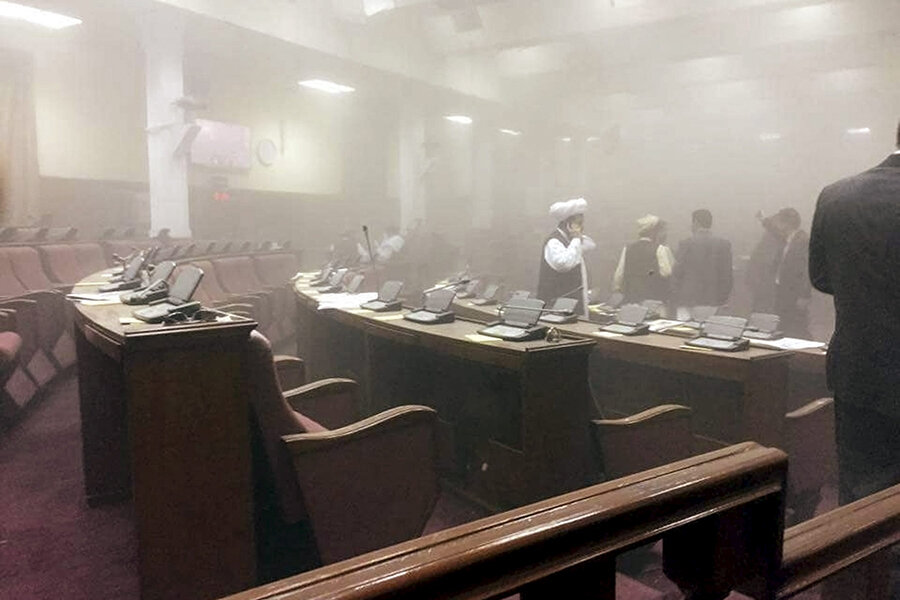Afghan forces repel daring Taliban attack on Kabul parliament
Seven Taliban militants attacked the Afghan parliament in Kabul on Monday while it was in session, in one of the most daring attacks by the insurgent group in recent years.
The attack started when a car with explosives blew up outside the parliament gates, having passed through a number of security checkpoints, Reuters reported, citing a Kabul police spokesman. Six gunmen then opened fire in a building opposite the parliament, a gun battle that lasted up to two hours.
Members of parliament were seen being evacuated on television. None were hurt, though nineteen people were injured. All seven attackers were killed.
"It shows a big failure in the intelligence and security departments of the government," said Farhad Sediqi, a lawmaker, told Reuters.
The attack comes after the US military ended major combat operations in Afghanistan in December, adding to worries about the Afghan Army's ability to contain the Taliban.
The attack occurred as lawmakers gathered to vote up or down on Masood Staneksai as Afghanistan's new defense minister. Mr. Stanekzai is said to have been in the tightly-secured building during the assault. The country has been without a confirmed defense minister for nearly 10 months; President Ashraf Ghani’s previous two candidates were rejected by the parliament.
The Taliban quickly claimed responsibility for the attack, with spokesman Zabihullah Mujahid tweeting: "Several mujahideen have entered the parliament building, heavy fighting is on-going."
Taliban attacks have surged in the last two months. Fighting is particularly fierce in the northern Kunduz province, where Archi district fell to the Taliban today, the second district to fall in the last two days.
The resilience of the Taliban, who ruled Afghanistan from 1996 to 2001, continues after more than a decade of war waged by US and its NATO allies in the country. With the Afghan Army and police now fighting more-or-less alone, there are doubts about what comes next. The Christian Science Monitor wrote last year:
Throughout the Afghan war, the US conducted capture-kill operations, missions designed to target key militant leaders. Such operations were most commonly used under US Army Gen. David Petraeus from 2010-2011. A report by the independent Afghanistan Analysts Network that analyzed press releases by the International Security Assistance Forces from Dec. 1, 2009 to Sept. 30, 2011 found that ISAF reported operations that killed 3,873 individuals and detained 7,146. Among those, 174 described as leaders were killed and 501 were detained.
….
Yet Taliban insurgents appeared largely unaffected. Some say their gains speak more to the drawdown of international troops than to growing Taliban strength. But others worry that even when there is a window to rein in Taliban influence, especially through local efforts, there is not enough support from Afghan security forces to sustain the effort.
The US Embassy in Kabul condemned Monday's attack, as did the the United Nations Assistance Mission in Afghanistan.






